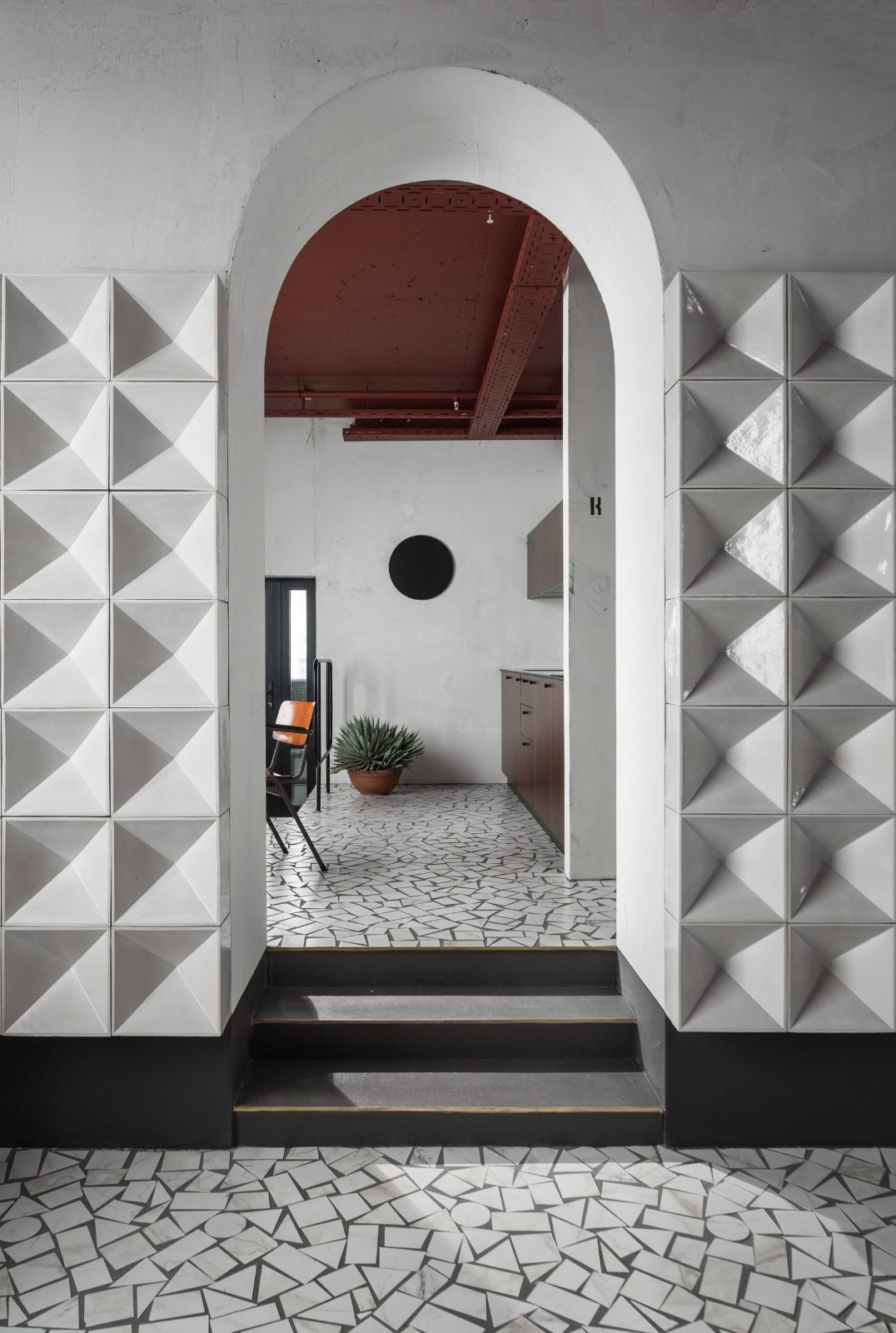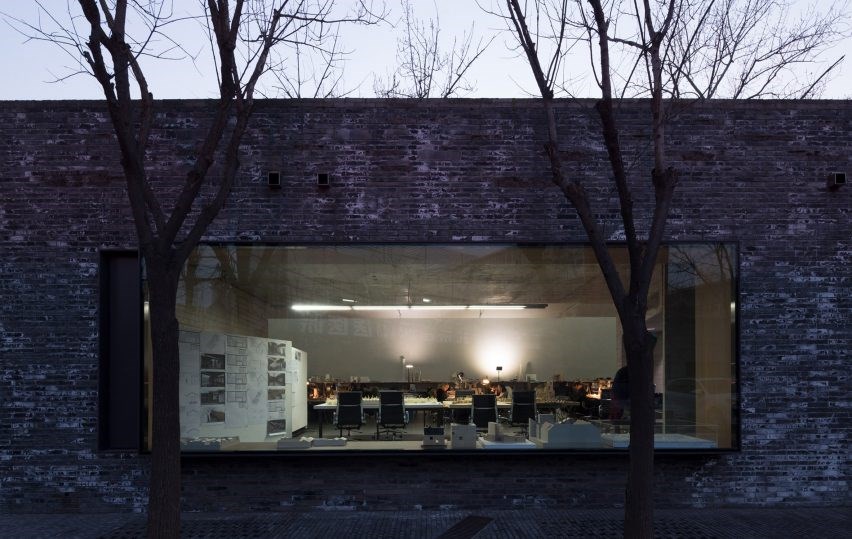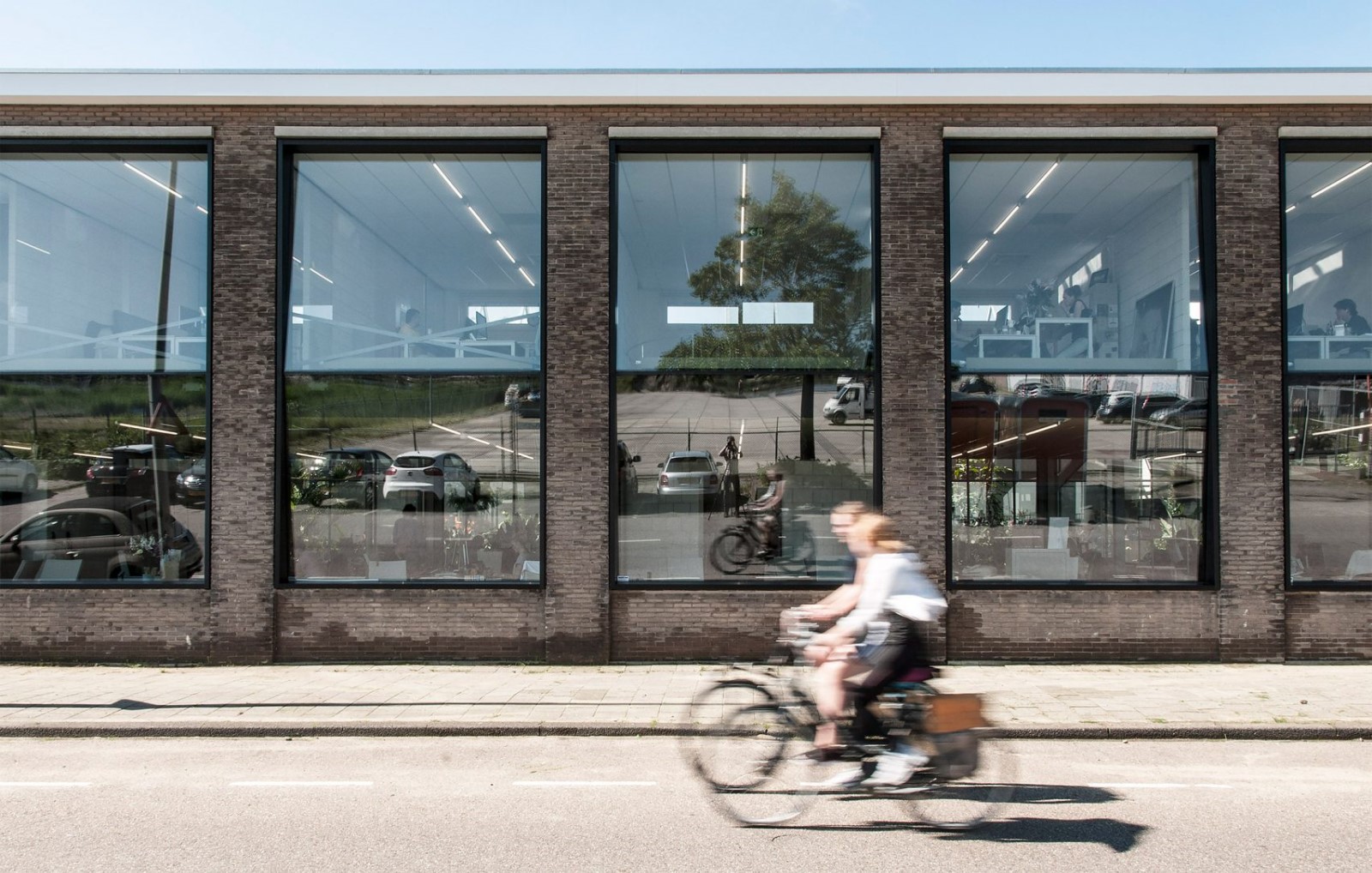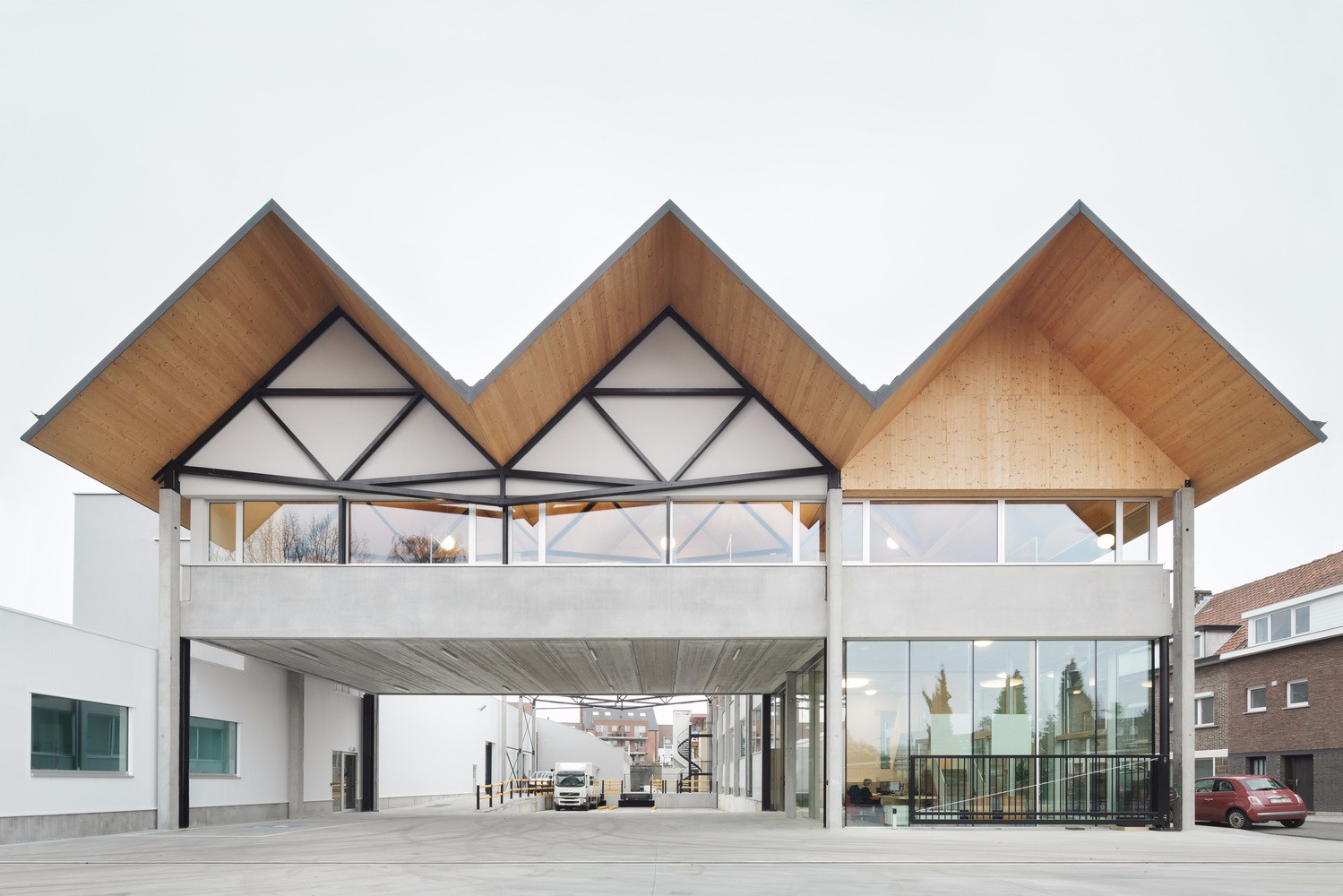Stanford University Central Energy Facility ZGF Architects
2016-04-25 13:00
© Steve Proehl
史蒂夫·普罗尔


架构师提供的文本描述。斯坦福大学(StanfordUniversity)刚刚完成了校园能源系统的转型-用电网供电和首个热回收系统取代了一个100%基于化石燃料的热电联产工厂。将斯坦福大学定位为能源效率和碳减排方面的国家领导者,其结果令人印象深刻:温室气体排放减少了68%;化石燃料使用减少了65%;校园内用水减少了15%。这项全面的斯坦福能源系统创新(SESI)计划将每年消除15万吨二氧化碳排放,相当于每年从道路上清除3.2万辆汽车。斯坦福大学35年的能源节约预计为4.25亿美元。
Text description provided by the architects. Stanford University has just completed a transformational campus-wide energy system— replacing a 100% fossil-fuel-based combined heat and power plant with grid-sourced electricity and a first-of-its-kind heat recovery system. Positioning Stanford as a national leader in energy efficiency and carbon reduction, the results are impressive: greenhouse gas emissions are slashed by 68%; fossil fuel use by 65%; and campus-wide water use by 15%. This comprehensive Stanford Energy System Innovation (SESI) initiative will eliminate 150,000 tons of carbon dioxide emissions annually, the equivalent of removing 32,000 cars from the road every year. Expected energy savings to Stanford over 35 years is $425 million.
© Robert Canfield
罗伯特·坎菲尔德


Sesi公司合并了一个o站点,专门生产68兆瓦清洁可再生电力的太阳能农场,通过15万个高效光伏电池板;将所有建筑物的热供应从蒸汽转换为热水;以及一个创新的热回收回路,吸收校园冷却系统产生的近三分之二的余热,为供暖系统提供热水。它的核心是一个新的中央能源设施,它体现了热回收方面的最新技术进步。加热和冷冻的水储存在三个巨大的水箱中,总容量为1200万加仑。斯坦福大学开发的一项专利技术持续监测该工厂的设备,预测校园能源负荷、电网价格和天气,使系统达到最佳效率。自动化软件也会审查自己的性能。
SESI combines an o site, dedicated solar farm producing 68 megawatts of clean renewable electricity via 150,000 high-eficiency photovoltaic panels; conversion of the heat supply of all buildings from steam to hot water; and an innovative heat recovery loop that captures nearly two-thirds of waste heat generated by the campus cooling system to produce hot water for the heating system. At its heart is a new Central Energy Facility that embodies the latest technological advances in heat recovery. Heated and chilled water is stored in three massive water tanks totaling 12 million gallons. A patented technology developed by Stanford continuously monitors the plant’s equipment, predicts campus energy loads, grid prices and weather, steering the system to optimal efficiency. The automated software also reviews its own performance.


125,614 SF中央能源设施位于中心校园的西侧,就在校园核心外。它的位置尊重奥尔姆斯特德最初的轴向校园计划和功能,以使大学的创建和未来的四人。该能源综合体由两个不同的组成部分组成:一个进入法院和一个行政/教学设施,作为两座主要厂房之间的关节;热回收冷却器(HRC)工厂及其两个大型冷水储罐;加利福尼亚州卫生规划和发展办事处(OSHPD);一个服务站;以及一个新的校园范围内的主要变电所。各种组件的聚集和布置将整个设施的影响降到最低,并由优雅的金属屏幕提供额外的视觉屏蔽。主要入口在突出的东边,面向中央校园,而变电站位于西部边缘,以尽量减少其视觉存在。
The 125,614 SF Central Energy Facility is located on the west side of the central campus, just outside the campus core. Its siting respects Olmstead’s original axial campus plan and functions to align the University’s founding and future quads. The energy complex is comprised of ve distinct components: an Entry Court and Administrative/Teaching Facility, which serves as the knuckle between two major plant buildings; the Heat Recovery Chiller (HRC) Plant with its two large cold water storage tanks; the California State O ce of Health Planning and Development (OSHPD) Plant; a service yard; and a new campus- wide, main electrical substation. The massing and arrangement of the various components minimize the overall facility’s impact, with additional visual shielding provided by elegant metal screens. The main entry is on the prominent eastern edge, facing the central campus, while the electrical substation is located on the western edge to minimize its visual presence.
© Robert Canfield
罗伯特·坎菲尔德


建筑的整体表现形式是轻盈、透明和可持续性,以表达设施的目的。中央能源设施的重要性来自斯坦福大学丰富的历史和当代建筑收藏。斯坦福的经典石灰石建筑是以整体颜色的板状混凝土为代表的,而风化的Corten钢口音则代表着赤陶瓦屋顶。广泛的玻璃,暗钢柱和抛光铝建立了当代乡土,而再生木材适合在拱廊增加温暖。
The overall architectural expression is one of lightness, transparency and sustainability to express the facility’s purpose. The Central Energy Facility’s materiality takes its cues from Stanford’s rich collection of historical and contemporary buildings. Stanford’s classic limestone buildings are represented by integrally-colored, board-formed concrete, while weathered CorTen steel accents suggest the terra-cotta tile roofs. Extensive glazing, dark steel columns and polished aluminum establish a contemporary vernacular, while reclaimed wood so fits in the arcades add warmth.
© Robert Canfield
罗伯特·坎菲尔德




© Robert Canfield
罗伯特·坎菲尔德




















































Architects ZGF Architects
Location Palo Alto, CA, United States
Category Other Facilities
Area 125600.0 ft2
Project Year 2015
Photographs Matthew Anderson, Steve Proehl, Robert Canfield, Tim Griffith

















.jpg)













